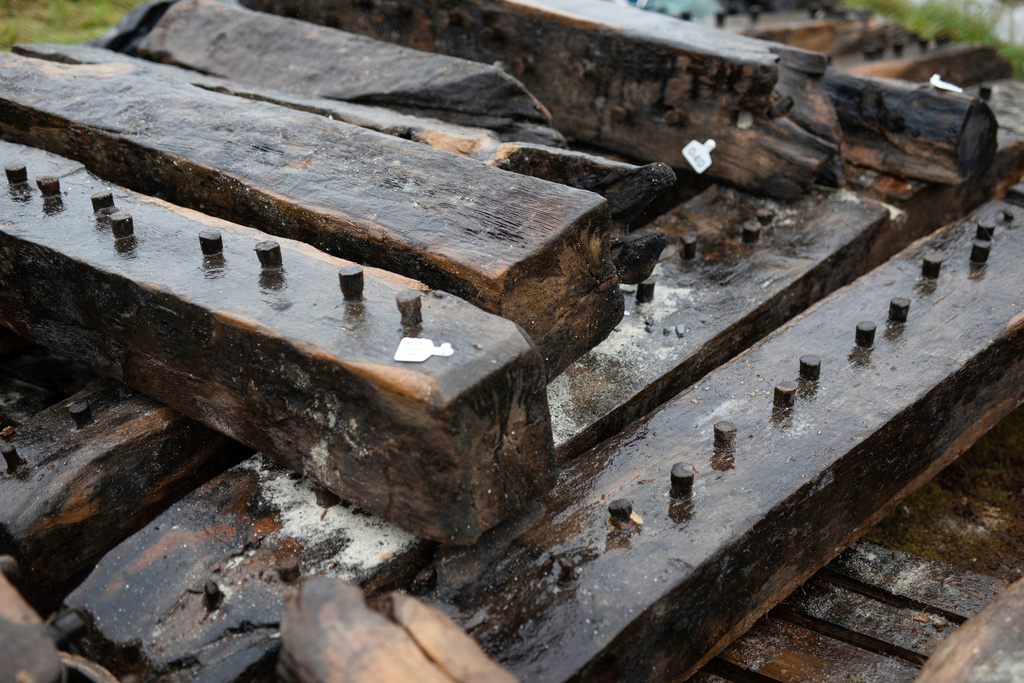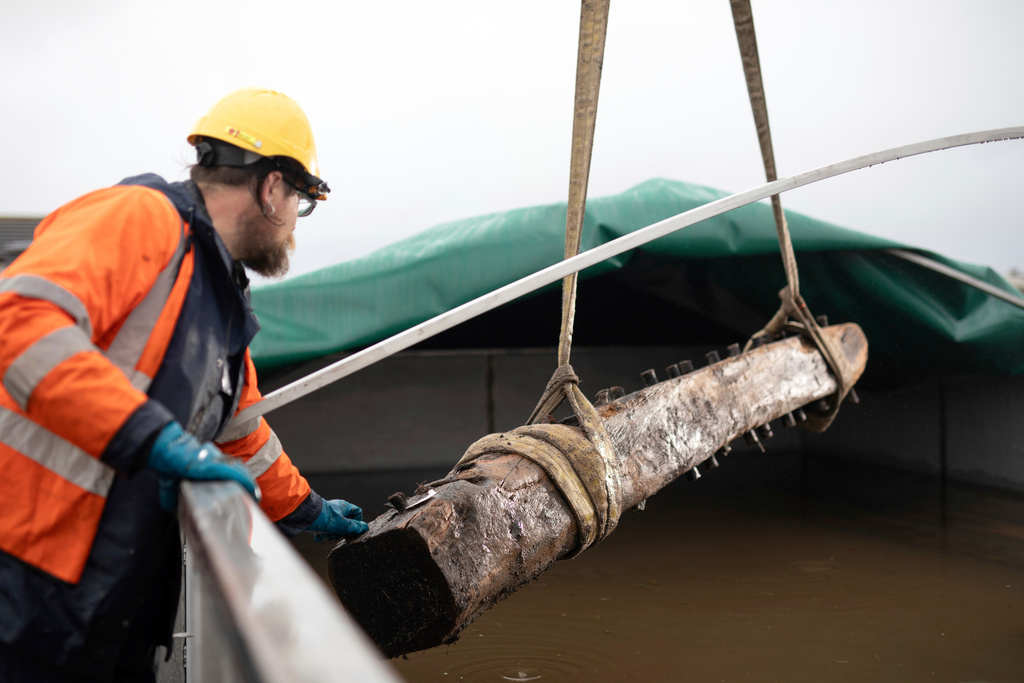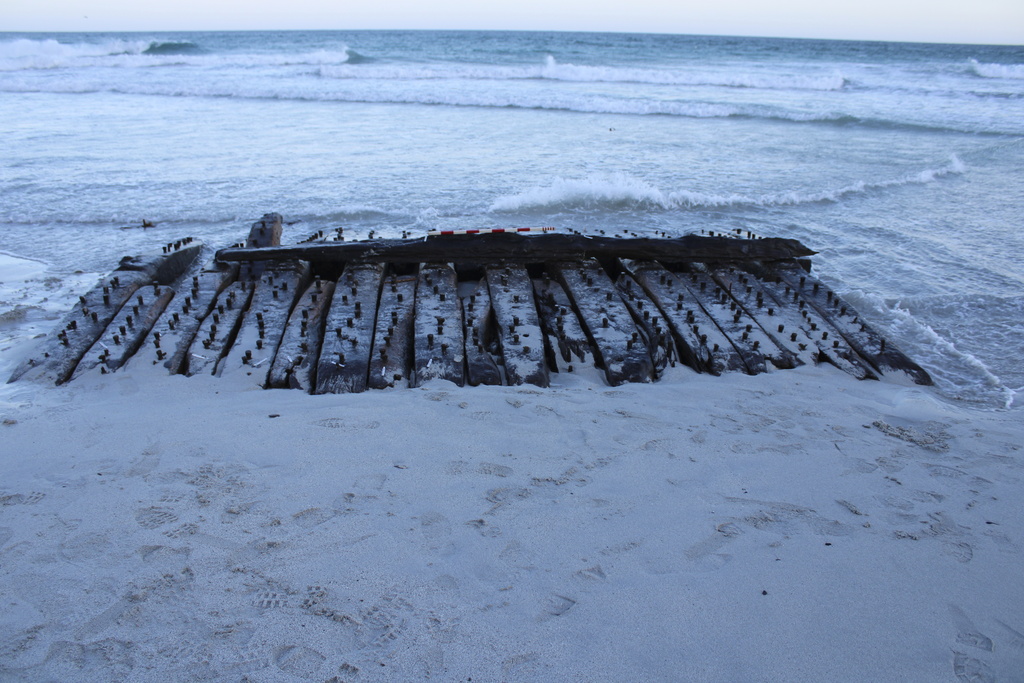LONDON (AP) — When a young student, while out for a run, discovered the bones of a wooden ship emerging from the dunes of a secluded Scottish shoreline, it initiated an investigation by archaeologists, scientists, and local historians to reveal its history.
By combining advanced scientific methods with local research, they have found a solution. Researchers revealed on Wednesday that the ship is most likely the Earl of Chatham, an 18th-century warship that participated in the American War of Independence and later spent time hunting whales in the Arctic — before meeting a turbulent end.

“I would consider it a fortunate vessel, which is an unusual statement to make about a ship that has been wrecked,” said Ben Saunders, a senior marine archaeologist with Wessex Archaeology, a nonprofit organization that assisted community researchers in carrying out the study.

“I believe that if it had been discovered in various other locations, it might not have sparked the same level of community effort, the motivation to recover and analyze the material, or the collective enthusiasm to accomplish it,” Saunders stated.
Uncovered after 250 years
The wreckage was found in February 2024 following a storm that uncovered it on Sanday, one of the harshOrkney Islandsthose located off the northern tip of Scotland.
It sparked curiosity on the island, home to 500 residents whose history is deeply connected to the sea and its perils. Approximately 270 shipwrecks have been documented near the 20-square-mile (50-square-kilometer) island since the 15th century.
Local farmers utilized their tractors and trailers to transport the 12 tons of oak timber from the beach, prior to local researchers beginning efforts to determine its origin.
That was truly enjoyable, and it felt great to see the community coming together to restore it,” said Sylvia Thorne, one of the island’s community researchers. “Many people are now showing a lot of interest and are becoming knowledgeable about it.
Dendrochronology, the study of determining the age of wood through tree rings, revealed that the timber originated from southern England in the mid-18th century. This was a fortunate discovery, according to Saunders, as it aligns with “the time when British bureaucracy really began to take shape” and thorough records were being maintained.
So we can then begin to examine the archival evidence we have regarding the shipwrecks in Orkney,” Saunders stated. “It turns into a process of elimination.
You eliminate those that are Northern European rather than British, you remove wrecks that are too small or based in northern England, and you’re ultimately left with two or three… and the Earl of Chatham is the one remaining.
Wars and whaling
Additional investigation revealed that prior to being the Earl of Chatham, the vessel was known as HMS Hind, a 24-gun frigate of the Royal Navy, constructed in Chichester on England’s southern coast in 1749.
Its military service was involved in the growth — and reduction — of the British Empire. It assisted Britain in gaining control of Canada from France during the sieges of Louisbourg and Quebec in the 1750s, and in the 1770s functioned as a convoy protector during Britain’s unsuccessful attempt to retain its American colonies.
Sold by the navy in 1784 and given a new name, the ship transitioned into a whaling vessel, pursuing large marine animals in the Arctic waters near Greenland.
Whale oil played a crucial role during the Industrial Revolution, serving as a lubricant for machines, a fabric softener, and a source of light for urban areas. Saunders noted that in 1787, 120 whaling vessels based in London were operating in the Greenland Sea, including the Earl of Chatham’s ship.
A year later, as it was en route to the whaling grounds, it was destroyed in severe weather near Sanday. All 56 crew members lived — further proof, according to Saunders, that this ship was fortunate.
Community effort
The vessel’s wooden structure is being kept in a fresh water tank at the Sanday Heritage Centre as discussions continue regarding its long-term exhibition.
Saunders mentioned that the project serves as an example of community participation in archaeological efforts.
“The community has been very eager, very interested in getting involved and discovering what they can learn, and they’re very proud of it. It’s because of them that it was discovered, because of them that it was recovered, and it has been stabilized and protected,” he said.
For residents, it represents a connection to the island’s seafaring history — and its tomorrow. Locating sunken ships may occur more frequently as climate change modifies the wind systems near Britain and transforms the shoreline.
“One of the most significant takeaways from this project has been understanding how deeply the past in Sanday remains with you—whether it’s visible or just beneath the surface,” said Ruth Peace, another community researcher.







